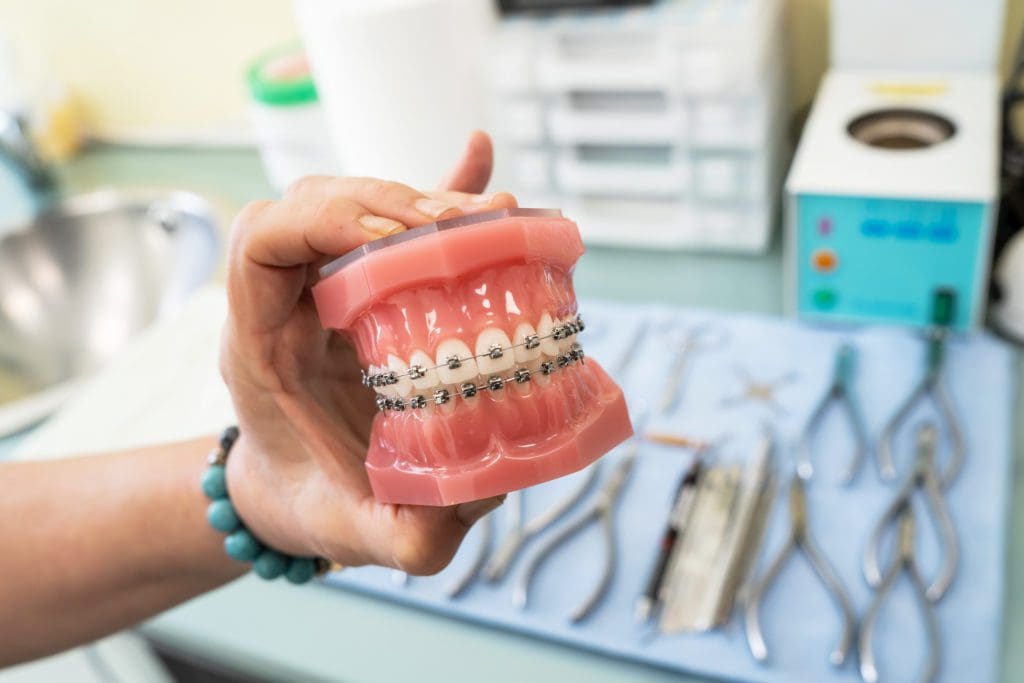Comprehensive Overview to Orthodontics Procedures for Correcting Oral Imbalances
In the realm of orthodontics, the journey to achieving a flawlessly lined up smile involves a myriad of treatments tailored to deal with oral imbalances. From traditional dental braces to unseen aligners and even surgical choices, the area of orthodontics supplies a variety of services to attend to differing degrees of dental abnormalities. Comprehending the ins and outs of each treatment, including their systems, advantages, and possible downsides, is critical in making educated decisions about one's orthodontic treatment. As we navigate with the detailed guide to orthodontic procedures for fixing oral imbalances, the detailed information of each method will unravel, clarifying the path toward a practical and unified dental placement.
Orthodontic Procedures Summary

Along with standard dental braces and clear aligners, orthodontists might also suggest other interventions like headgear, palatal expanders, or retainers to deal with specific positioning issues (orthodontist). These treatments are customized to every individual's unique needs and may include a mix of therapies to achieve the preferred outcomes. Regular modifications and monitoring are crucial parts of orthodontic treatment to ensure progression is on track and to make any kind of required adjustments along the way. By undertaking orthodontic procedures, clients can not just attain a straighter grin yet likewise improve their overall oral health and feature.
Traditional Braces: Exactly How They Function
When considering orthodontic therapies for oral imbalances, conventional dental braces stand out as a tried and true technique for correcting teeth positioning. Typical braces include braces, cables, and bands that interact to apply continual pressure on the teeth, gradually relocating them right into the wanted placement. The braces are connected to the teeth using a special adhesive, and the cables are threaded with the braces. By changing the stress of the wires, orthodontists can control the instructions and force put on each tooth, assisting them into proper alignment in time.
One secret aspect of how typical dental braces work is the process of bone improvement. As pressure is used to the teeth through the braces, the bone bordering the teeth is improved to support the brand-new tooth positions. This renovation is important for the lasting security of the fixed placement. People will need routine adjustments at the orthodontist's office to guarantee the braces continue to use the proper stress for effective teeth motion.
Unnoticeable Aligners: Advantages And Disadvantages
Unnoticeable aligners supply a very discreet and convenient option to traditional dental braces for dealing with dental imbalances. These clear, customized trays are practically unnoticeable when worn, making them an enticing option for people seeking an extra cosmetically pleasing orthodontic treatment. One of the primary advantages of undetectable aligners is their removability, permitting less complicated upkeep of oral hygiene contrasted to conventional braces. Individuals can eliminate the aligners before eating or cleaning their teeth, minimizing the risk of food getting stuck in the device and simplifying the cleansing process.

Surgical Orthodontic Options
Surgical treatments in orthodontics present feasible choices for dealing with complicated oral misalignments that might not be properly settled with traditional orthodontic therapies. While typical dental braces and undetectable aligners can remedy several orthodontic problems, certain cases need medical intervention to achieve optimum outcomes. Surgical orthodontic alternatives are typically recommended for serious malocclusions, substantial jaw discrepancies, and view situations where the underlying bone structure needs alteration to accomplish correct positioning.
One usual surgical orthodontic procedure is orthognathic surgical procedure, which entails repositioning the jaws to fix practical issues such as difficulty speaking or eating. This surgical treatment is usually performed in partnership with an orthodontist that helps straighten the teeth before and after the treatment. Surgical orthodontics might also include procedures to subject impacted teeth, get rid of excess gum tissue, or improve the jawbone to create a much more unified facial account.
Prior to taking into consideration surgical orthodontic alternatives, patients go through a thorough examination to figure out the necessity and possible advantages of such interventions. cumming orthodontics. While surgical treatment might appear daunting, it can substantially improve both the function and visual appeals of the smile in cases where traditional orthodontic treatments drop short
Retainers and Post-Treatment Treatment

Post-treatment care entails adhering to the orthodontist's guidelines vigilantly. This might include proper oral hygiene techniques, participating in follow-up appointments, and wearing the retainers as prescribed. Failing to follow post-treatment treatment instructions can result in relapse, where the teeth gradually return in the direction of their initial settings. Regular retainer wear, good dental hygiene, and routine dental examinations are necessary for maintaining the outcomes achieved via orthodontic surgery and guaranteeing the long-lasting security of the fixed oral positioning.
Verdict
To conclude, orthodontic treatments use numerous alternatives for fixing dental imbalances. Conventional dental braces utilize metal braces and cords to move teeth into correct placement. Unseen aligners provide a more discreet option but might not be ideal for all instances. Surgical orthodontic options are available for extra serious misalignments. Retainers are typically utilized post-treatment to maintain the brand-new positioning. Generally, orthodontic treatments can properly improve oral health and wellness and aesthetic appearance.
As we browse via the comprehensive overview to orthodontic treatments for fixing dental imbalances, the elaborate details of each technique will certainly unfold, losing light on the course toward a practical and harmonious oral alignment. - invisalign
One of the most usual orthodontic therapies is the use of braces, which consist of metal brackets and cords that use mild pressure to progressively shift teeth right into the desired position.When thinking about orthodontic therapies for oral imbalances, typical dental braces stand out as a tried and true approach for dealing with teeth placing. In addition, undetectable aligners may not be appropriate for complicated orthodontic concerns that call implant for more substantial teeth motion, as they are usually suggested for light to modest instances. Retainers are customized orthodontic gadgets created to hold teeth in their fixed positions after the conclusion of orthodontic therapy.